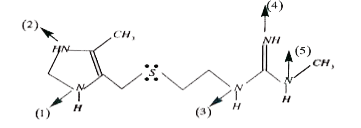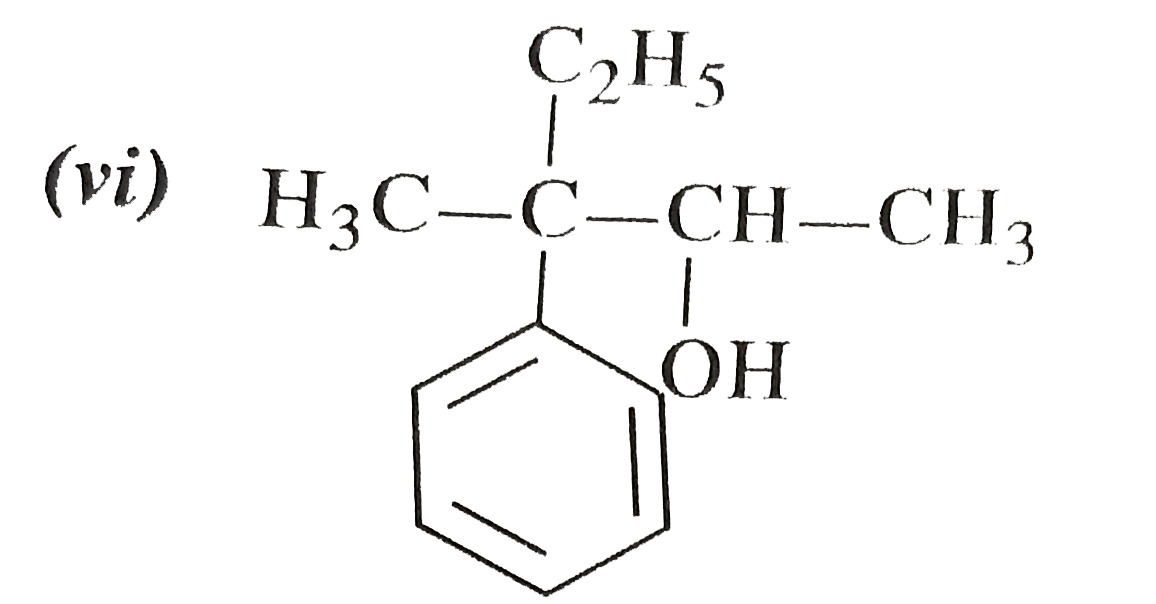CH2=CH(I)−CH=CH−CH3 is more stable than CH3−CH=C(II)=CH−CH3 becauseSolution in Telugu
there is resonance in I but not in II
there is tautomerism in I but not in II
there is hyperconjugation in I but not in II
II has more canonical structures than I.
The correct Answer is:A
there is resonance in I but not in II
Topper's Solved these Questions
- BOOK - AAKASH SERIESCHAPTER - ELECTRONIC EFFECTS AND REACTION INTERMEDIATESEXERCISE - ADDITIONAL PRACTICE EXERCISE (LEVEL - II (LECTURE SHEET ADVANCE)) (Straight ObjectiveType Questions)10videos
ELECTRONIC EFFECTS AND REACTION INTERMEDIATES
- BOOK - AAKASH SERIESCHAPTER - ELECTRONIC EFFECTS AND REACTION INTERMEDIATESEXERCISE - ADDITIONAL PRACTICE EXERCISE (LEVEL - II (LECTURE SHEET ADVANCE)) (More than One correct answer Type Questions)11videos
ELECTRONIC EFFECTS AND REACTION INTERMEDIATES
- BOOK - AAKASH SERIESCHAPTER - ELECTRONIC EFFECTS AND REACTION INTERMEDIATESEXERCISE - PRACTICE SHEET ( EXERCISE-III (LEVEL-II (ADVANCE)) (Integer Type Questions)6videos
ELECTRONIC EFFECTS AND REACTION INTERMEDIATES
- BOOK - AAKASH SERIESCHAPTER - ELECTRON MIGRATION EFFECTS EXERCISE - QUESTIONS FOR DESCRIPTIVE ANSWERS10videos
ELECTRON MIGRATION EFFECTS
- BOOK - AAKASH SERIESCHAPTER - ELEMENTS OF BORON FAMILYEXERCISE - OBJECTIVE EXERCISE - 37videos
ELEMENTS OF BORON FAMILY
Similar Questions
Consider the basicity of the following aromatic amines:
(I) aniline (II) p-nitroaniline (III) p-methoxyaniline (IV) p-methylaniline
The correct order of decreasing basicity is:04:23View SolutionResonance energy will be more if
03:39View SolutionOn mono protonation which nitrogen of the following compound can be protonated.
 01:19View Solution
01:19View SolutionHyperconjugation effect is also termed as 'no bond resonance'. Why?
02:07View SolutionWhich one of the following compounds is not a protonic acid ?
View SolutionWrite the IUPAc name of the following compound :
(a) CH3−CH2−CH3∣CH−CH=CH−CH2−CH3
(b) CH3−CH2−CH3∣CH−CH2−CH3∣CH−CH∣CH2∣CH2∣CH−CH3∣CH3−CH=CH3∣C−CH301:18View SolutionWrite IUPAC name of the following compound
(a) CH3−CH2−C≡C−CH∣CH2∣CH−CH3∣CH3−CH=CH2
_S01_017_Q01.png) 03:50View Solution
03:50View SolutionCH2=CH−CH=CH−CH3(I) is more stable than CH3−CH=C=CH−CH3(II) because
05:09View SolutionCH_(3)-underset(CH_(3))underset(|)(CH)-CH=CH-CH_(2)-overset(O)overset(||)(C)-OH
View SolutionGive the IUPAC names of the following compounds:
(i)C6H5−CH2−CH2−OH (ii)CH3−CH3∣C∣CH3−CH2−CH2−OH
(iii)[(CH3)2CH]3COH. (iv)CH3−CH∣OH−CH2−CH2−O−CH2CH3
(v)CH3−CH2−CH∣Cl−CH∣CH3−CH3∣C∣OH−CH3 (vi)
(vii)(CH3)3COH (viii)CH3−CH∣CH3−CH∣OH−CH2−CH∣CH3−CH3
(ix) CH2OH |CH2−CH2−CH−CH−CH−CH3 | | CH2Cl CH3, (x) CH3−C=C−CH2OH | | CH3Br
(xi) CH2=CH−CH∣OH−CH2−CH3, (xii) CH2OH |CH3−CH−CH2−CH−CH−CH3 | | CH3 OH01:40View SolutionThe IUPAC name of CH_(3)-underset(CH_(3))underset(|)CH-underset(CH_(3))underset(|)CH-CH_(2)CH_(2)-underset(CH_(3))underset(|)CH-CH_(3)
02:28View SolutionWrite the IUPAC names of the following compounds. (i) CH_(3)-CH_(2)-underset(OH)underset(|)(CH)-CH_(2)-CH_(2)-underset(CH_(3))underset(|)(CH)-CH_(2)-CH_(3) (ii) CH-=C-CH=CH-CH=CH_(2)
04:32View SolutionCompare the acidic strength of the following : (a) CH_(3) - CH_(2) - CH_(2) - COOH (b) CH_(3) - underset(Cl) underset(|) CH - CH - COOH (c) CH_(3) - underset(F) underset(|)CH - CH - COOH (d) CH_(3) - underset(NO_(2))underset(|)(CH) - CH - COOH
View SolutionCH_(3)-CH= CH-CH_(3)+ Br_(2) to CH_(3)-underset(Br)underset(|)CH-underset(Br)underset(|)CH-CH_(3) is an
View SolutionGive IUPAC names of the following compounds: (i) CH_(3) -underset (Cl) underset (|) (CH) - underset (CH_(3)) underset (|) (CH) - underset (CH_(3)) underset (|)(CH) - CH_(2)OH (ii) CH_(3) - underset (CH_(3)) underset (|) (CH) - O - CH_(2)CH_(3) (ii)
01:13View SolutionName the following compounds according to IUPAC system. (i) CH_(3) - CH_(2) - underset (CH_(2)Cl) underset(|)(CH) - overset (CH_(2)OH) overset(|) (CH) - underset (CH_(3)) underset (|) (CH) - CH_(3) CH_(3)- underset (CH_(3)) underset(|) (CH) -CH_(2) - underset(OH) underset(|) (CH) - overset (CH_(2)OH) overset(|) (CH) - CH_(2) (iii) (iv) H_(2)C = CH - underset (OH)underset (|) (CH) - CH_(2) - CH_(2) - CH_(3) (v) CH_(3) - underset (CH_(3)) underset ( |) C = underset (Br)underset(|) C - CH_(2)OH
02:55View Solution

